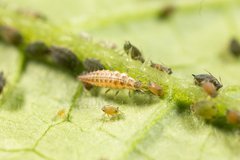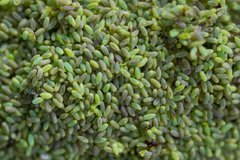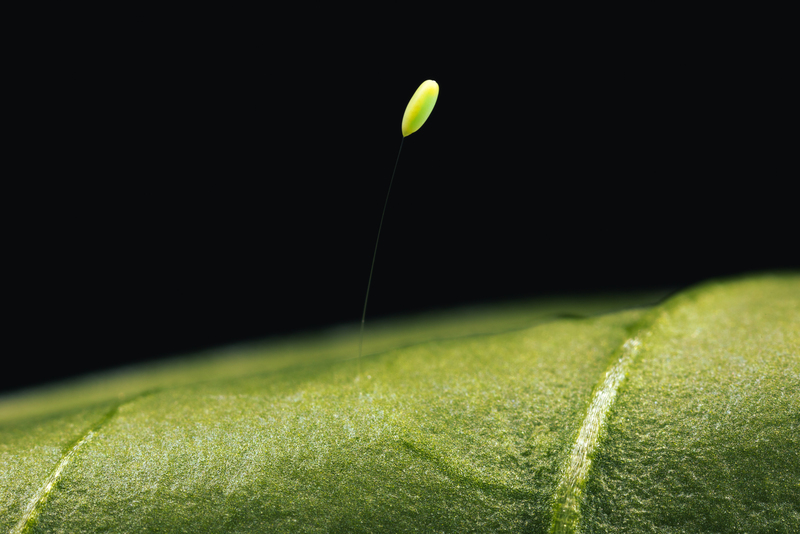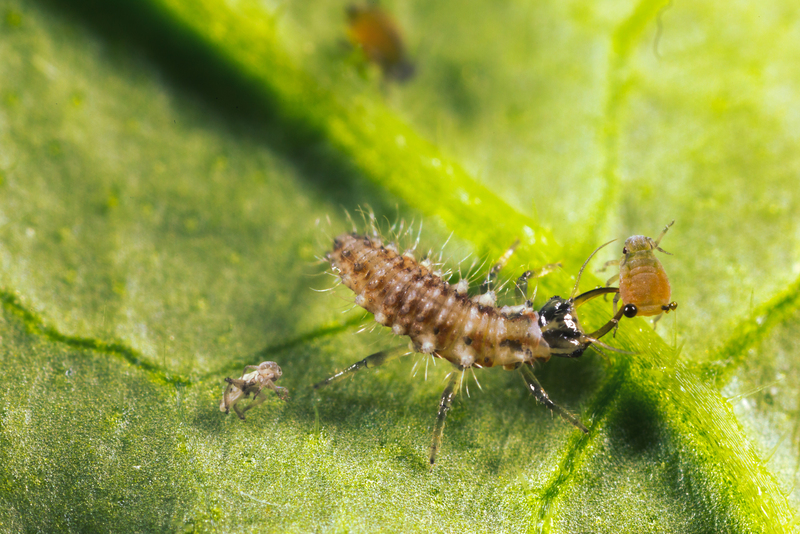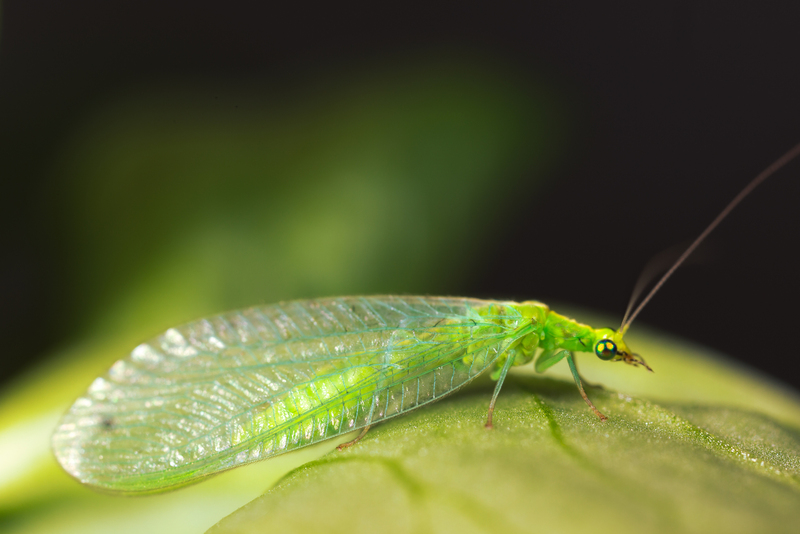Chrysoperla carnea for pest control
Chrysoperla carnea, commonly known as the green lacewing, is a beneficial insect used in agriculture as a natural predator of various pest insects. It belongs to the family Chrysopidae within the order Neuroptera. Green lacewings target on aphids, caterpillars, thrips, mealybugs, and other soft-bodied insects that are harmful to plants. In agriculture, Chrysoperla carnea is employed as a biological control agent to manage pest populations. The larvae of green lacewings are particularly effective predators.
The green lacewing Chrysoperla carnea is used for the control of the following pests:
The natural enemy Chrysoperla carnea is available at Koppert as Chrysopa and Chrysopa-E.
How to use Chrysoperla carnea
The lacewing Chrysoperla carnea is available in bottle (Chrysopa).
- Shake the bottle or bucket gently before use
- Apply on infested leaves
- For hotspot treatments, apply Chrysopa directly in the heavily affected areas
- The product can be applied on the rock wool slabs, on leaves, via Dibox application boxes or distributed by Air(o)bug
The dosage of Chrysopa depends on climate, crop and pest density and should always be adjusted to the particular situation. Start introduction as soon as the first pests are detected in the crop. Introduction rates typically range from 2-20 per m2/release. Releases should be made in infested areas only and repeated at weekly intervals until control is achieved. Consult a Koppert advisor or a recognized distributor of Koppert products for advice on the best strategy for your situation.
Koppert products
Best conditions for use of Chrysoperla carnea
Chrysoperla carnea is effective in a wide temperature range including low temperatures (average > 12°C/54°F). It is most effective at 20-28°C (68-82°F).
Feeding behaviour of Chrysoperla carnea
Lacewing larvae search for prey randomly on the plant. Their efficiency is seriously impaired by the presence of leaf hairs. The larvae are not easily observed and are mainly active at night, sheltering under the plant or the rim of the pot, during daylight hours. The larvae grasp their prey from below and lift them in their jaws. The prey is injected with a salivary fluid that digests the body contents, which are then sucked out. The prey can sometimes be larger than the larva itself. On average a larva will consume 300-400 aphids of various sizes during its development, although the actual quantity depends on prey species and temperature. When prey is scarce, the larvae can resort to cannibalism, with the older larvae eating the younger. Eggs are often ignored because they stand on stalks. Adults make no contribution to biological control. They feed exclusively on pollen, nectar and honeydew and most will fly out of the greenhouse.
Life cycle of Chrysoperla carnea
Growers can recognize the different life stages of the green lacewing, Chrysoperla carnea, when using it as a biocontrol product by observing its distinct physical characteristics at each stage. Here's how growers can identify the different life stages:
-
Egg Stage: Green lacewing eggs are small, oval-shaped, and usually laid individually or in small clusters on plant foliage or near prey habitats. They are pale green or white in color and are attached to the substrate by a slender stalk. The larvae will eat almost anything with contents they can suck up with their mouthparts.
-
Larval Stage: Green lacewing larvae of Chrysoperla carnea are 2-10 mm long. They have large, forwardly projecting jaws and well-developed legs. The larva is colourless and transparent when newly hatched, later becoming cream-coloured to light brown. The head is light grey, with black eyes, and dark mouthparts and antennae, with two converging dark brown dorsal stripes that become broader towards the rear. Two chocolate-brown, or red-brown, bands run over the body.
-
Pupal Stage: The pupae of the Chrysoperla carnea are usually separate from each other, but sometimes appear in groups when the population density is particularly high. The development of the pupa is visible externally. The outer cocoon is 8 mm long and 4 mm thick. The inner more closely spun cocoon is off-white and egg-shaped, about 3 mm long and 2.5 mm thick. The space between the inner and outer cocoon is filled with fine, loose webbing. Cocoons can be found attached to the upper or lower surface of leaves, to various other sheltered places, and even on the ground.
-
Adult Stage: Adult green lacewings are 23-30 mm long, slender, yellow-green in colour, with a yellow-white dorsal stripe, and golden eyes. They have large, transparent finely green-veined wings. The wings cannot be folded, and at rest are held tent-like above the abdomen. The hind-wings are slightly smaller than the fore-wings. The adult female green lacewing lays oval eggs on transparent stalks, attached to either the upper or lower surface of leaves. The length of these stalks is highly variable, but averages 3.5 mm.

